Soil analysis in truffle or mushroom growing : What does it consist of ?
- to confirm that your land is "compatible" with the development of truffles or edible mushrooms,
- to identify which variety of truffle (or mushroom) is best suited to your plot.
When and why do a soil analysis ?
Truffle farming and mushroom growing, like any other crop, are based on production techniques (tilling the soil, planting, irrigation, weeding, pruning, harvesting...). But this methodology, as meticulous as it may be, will only produce its fruits (or rather, should we say its truffles and mushrooms) on one condition: That the nature of the soil is compatible with the cultivation and development of truffles and mushrooms!
If the physical and chemical characteristics of your plots of land do not resemble the natural environment that favors the appearance and growth of truffles, then all your efforts will be in vain. Even if you are the most passionate truffle grower, the most attentive to the maintenance and growth of your plants, if the biotope of the truffle and the mushrooms is not respected, your truffle fields will not produce, or very few, mushrooms.
To avoid this kind of disillusionment, it is therefore better to carry out a study and analysis of the soil of your plots of land intended to host a truffle, boletus or milkweed orchard in the future.
Why initiate such a study?
Simply, and above all, to validate your truffle farm project. If the analysis of your soil confirms that it is "compatible" with the good development of truffles or mushrooms, then your project holds the road. On the other hand, if this study reveals any disconvenience with truffle/fungiculture, then you will probably have to review your plans and bet on another culture...
When should a truffle/mycicultural soil analysis be done?
The sooner the better. There is no need to wait until you have planted a hundred truffle plants before resorting to a soil analysis. It would be a bit like flipping a coin to see if your truffle orchard will last... Do things in the right order and put all the chances of success on your side by starting any new truffle project with a sampling and an examination of the characteristics of your soil.
The modalities of a soil evaluation in view of a truffle plantation
When a plot of land is considered for a future truffle or mushroom orchard, it is essential to have a soil analysis done. This in-depth examination of the soil aims to determine the host trees (truffle oaks, truffle hazelnut trees...) and especially the mushrooms (black truffle, Burgundy truffle, summer truffle or white truffle, yellow boletes, delicious milk caps) best adapted to your land and its characteristics.
This analysis takes place in three steps :
- sampling in the field
- analysis in the laboratory
- obtaining the results of the analysis and our recommendations
Soil sampling for soil analysis
If your soil is homogeneous, according to the sampling advice below, send us a sample of about 300g of soil, taken at a depth of 20 cm. If your soil is heterogeneous or has some relief, send us several samples of 300g of soil, taken from different places of the soil at a depth of 20 cm, by labeling the different samples.
Analysis of the soil composition in a laboratory
Your soil samples will be sent to an independent laboratory, specialized in soil analysis for truffle tree planting. They will be studied in depth both physically (structural assessment, granulometry, water retention capacity...) and chemically (acidity, pH, total nitrogen and C/N, limestone and clay content, phosphorus, potassium, magnesium, calcium, sodium...). All the parameters that are favourable or unfavourable to truffle production will be researched and quantified.
The analysis report and Robin's recommendations
Upon receipt of the analysis results, a complete report will be sent to you, including advice on possible fertilization of your soil. Our recommendations will depend on the physical and chemical characteristics of your soil, and in particular its acidity (pH), calcium content, and organic matter..
Sampling for soil analysis: Procedure
You wish to submit a sample of your soil for a soil analysis. Please follow the steps described below. Send us your sample by parcel post, we will take care of everything else! !
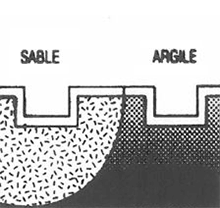 » Collect homogeneous samples : Each sample must correspond to a homogeneous area. Do not mix soil from heterogeneous areas.
» Collect homogeneous samples : Each sample must correspond to a homogeneous area. Do not mix soil from heterogeneous areas.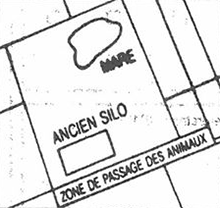 » Exclude specific areas : Do not collect on paths, field edges, old hedges, animal passage areas...
» Exclude specific areas : Do not collect on paths, field edges, old hedges, animal passage areas...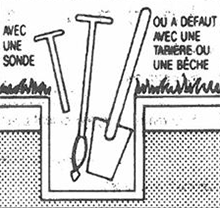 » Take the sample at 20 cm depth : Proceed by coring or simply by sampling with an auger or a spade.
» Take the sample at 20 cm depth : Proceed by coring or simply by sampling with an auger or a spade.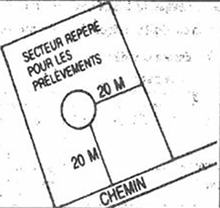 » Sample by sector if necessary : From each area, take at least 15 samples, disaggregate them and mix them in a clean bucket.
» Sample by sector if necessary : From each area, take at least 15 samples, disaggregate them and mix them in a clean bucket. » Bag the sample : Put 300 to 500 grams of the collected soil in a bag on which the exact place of sampling will be noted.
» Bag the sample : Put 300 to 500 grams of the collected soil in a bag on which the exact place of sampling will be noted. » Complete the analysis request form : Form to download, print and complete.
» Complete the analysis request form : Form to download, print and complete.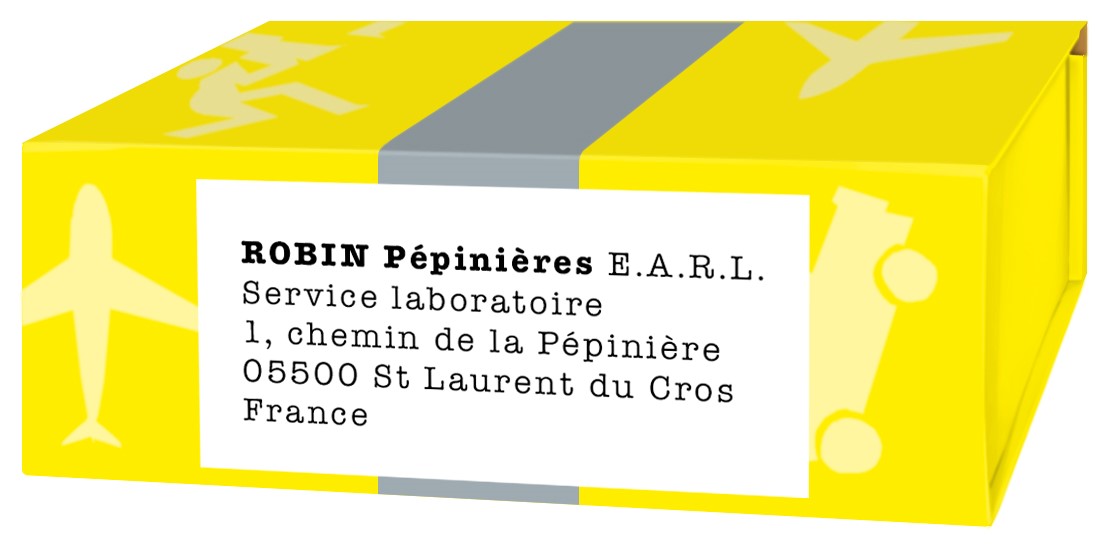 You can send us your samples by parcel post to the following address :
You can send us your samples by parcel post to the following address :
ROBIN Pépinières E.A.R.L
Service laboratoire
Le Village
05500 ST LAURENT DU CROS
Please enclose in your parcel :
- The sampling and soil information sheet (please download and print it), one sheet per sample.
- Soil sample(s).
Cost of analysis :
- 121€ taxes included per sample, for a Tuber magnatum plantation project.
- 99€ taxes included per sample, for a Tuber melanosporum, Tuber aestivum.var uncinatum or Tuber aestivum planting project.
Payment by :
- Bank transfert (please feel free to ask us our banking datas for doing the bank transfert)
Questions and answers about soil analysis in truffle or mushroom growing
It takes about 3 weeks to get the results of your soil analysis (from the time we receive your soil sample).
You can take the sample directly by following the advice above. Please note that for all plantations of more than 150 plants, ROBIN Nurseries offers you a turnkey service for the realization of your truffle orchard: The sales manager of your region will be able to take the soil sample with you for the soil analysis.
The soil analysis is invoiced at 99 € (all taxes included), to be paid by check or by bank transfer when sending your soil samples.
We recommend you to take a soil core sample (with a probe) from the first 20 centimeters of your soil. You can also use an auger or simply a spade.
Take a soil sample, baking soda and white vinegar. Start by dividing your soil sample into two containers. Pour white vinegar into the first container. If the mixture reacts and causes bubbles, your soil is alkaline. In the second container, add water to your soil until it forms a slurry. Then pour in baking soda. If the mixture bubbles, the soil is acidic. If neither of these two tests react, then the soil is probably neutral (pH 7).
You can send us your samples by parcel post to the following address :
ROBIN Pépinières E.A.R.L
Service laboratoire
Le Village
05500 ST LAURENT DU CROS
Thank you to join in your parcel :
- 99€ bank transfert per sample (to do the bank transfert please ask us by email our bank details and we will send it to you), in payment of the analysis (Price including VAT).
- the information sheet concerning your sample and the nature of the soil (to download, print and complete).
- the soil sample(s).